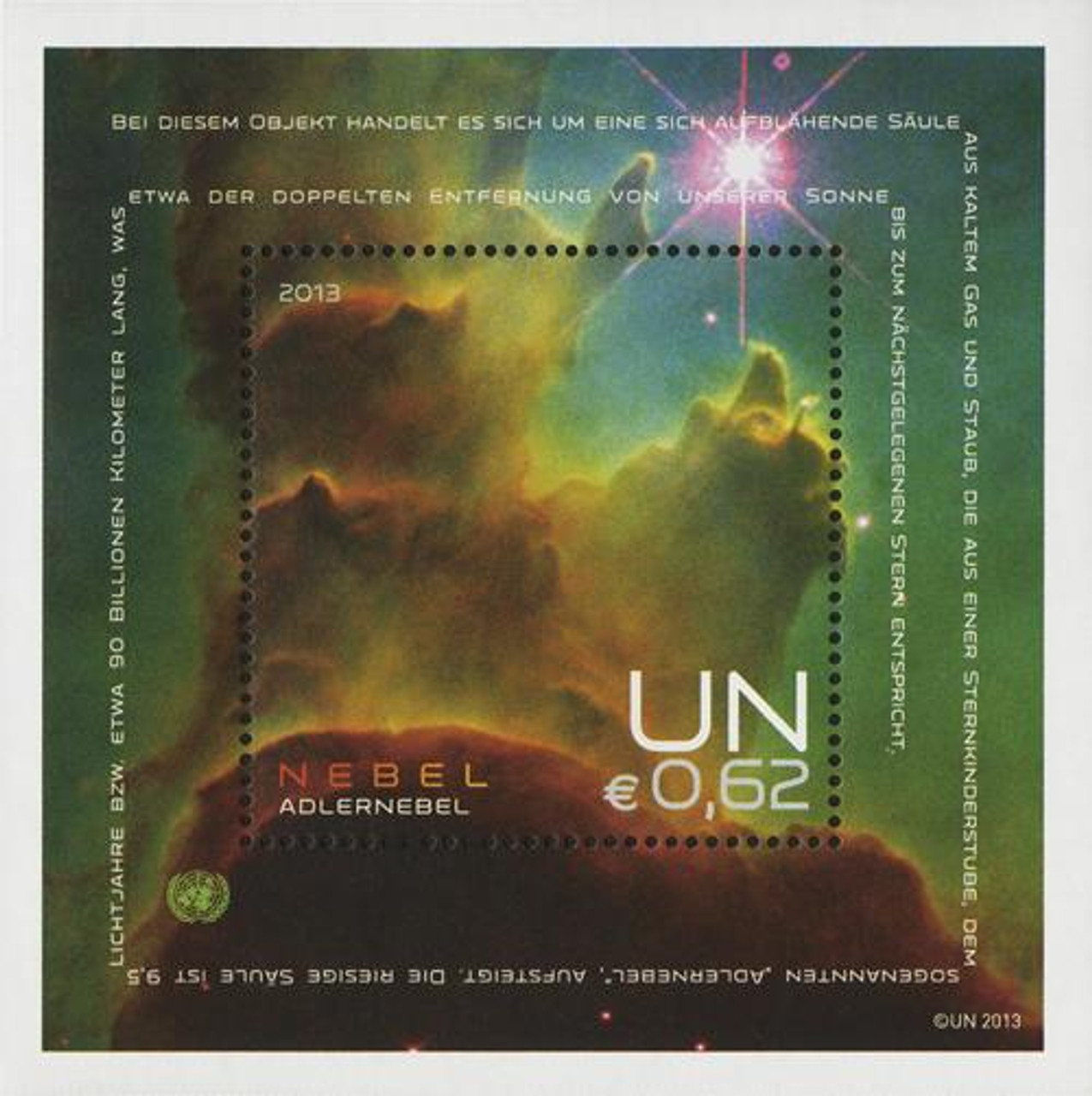
2013 Space
Vienna Office
The 2013 U.N. Space stamps celebrate the largest space event in the world, World Space Week, celebrated each year from October 4th to the 10th. World Space Week seeks to promote sustainable economic development and to excite, encourage and inspire, through international space education. This year’s stamps feature vari... more
2013 Space
Vienna Office
The 2013 U.N. Space stamps celebrate the largest space event in the world, World Space Week, celebrated each year from October 4th to the 10th. World Space Week seeks to promote sustainable economic development and to excite, encourage and inspire, through international space education. This year’s stamps feature varied nebulae, enormous clouds of dust particles and gas in space.
The term “nebula” comes from the Latin word for cloud. The space clouds we identify as nebulae are often regions where stars are being formed or regions left by dead or dying stars. Nebula clouds can range vastly in shape and size.
The €0,62 souvenir sheet depicts one of the Pillars of Creation in the Eagle Nebula. Evidence of supernova activity long ago indicates the pillars may have been wiped out as recently as 6,000 years ago. However, because the nebula is 7,000 light years from earth, it could take 1,000 more years before the destruction is visible from earth.












